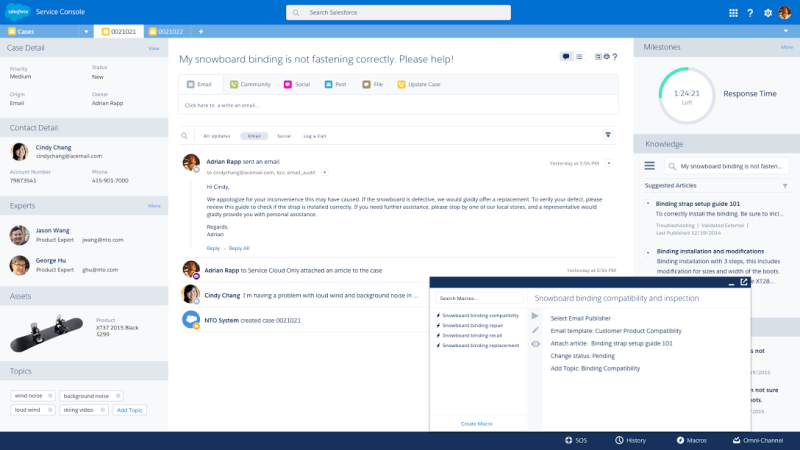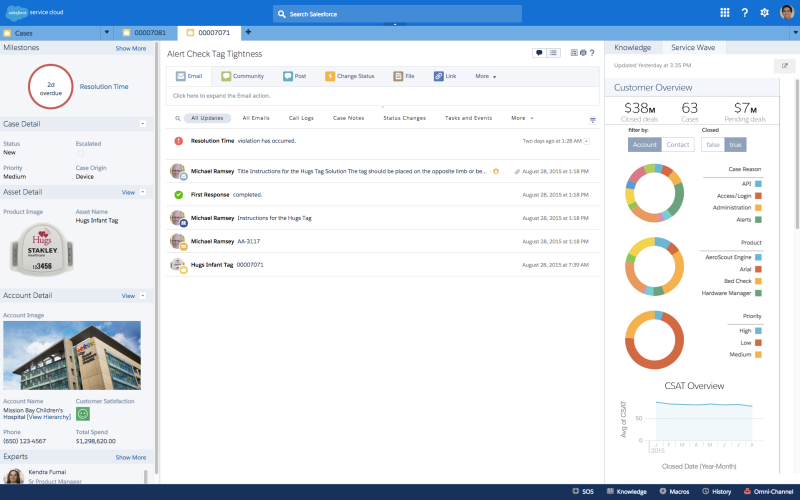The customer journey is undergoing a monumental change. Customers have access to more information, use more channels, and are connected via more devices than ever.
A critical part of this change is customer service.
Customers expect companies to provide support on new channels and address data from an exponentially growing number of devices. Plus, with an expected 50 billion connected Internet-of-Things (IoT) products by 2020, devices themselves will be logging issues and creating service cases.
Larry Robinson, SVP of product management for Salesforce Service Cloud, says that companies like Caterpillar and Philips Healthcare already have buttons in high-end machines that users can just press to access support.
AI Weekly
The must-read newsletter for AI and Big Data industry written by Khari Johnson, Kyle Wiggers, and Seth Colaner.
Included with VentureBeat Insider and VentureBeat VIP memberships.

Above: Salesforce Service Cloud Lightning Console
Gartner has estimated that by 2018, five percent of customer service cases will be initiated by Internet-connected devices, compared with 0.02 percent in 2014.
As a result, customer service agents need smarter, more integrated solutions.
Today Salesforce is announcing two major updates to its Customer Success Platform: Service Cloud Lightning Console and Service Wave Analytics.
The Lightning Console, a redesigned agent console, is better integrated to enable actions like creating new contacts, registering products, and processing returns, without needing to switch screens or lose the context of an interaction.
Agents also get access to relevant knowledge-base articles, recommended actions, and message templates based specifically on the issues they are trying to address.
The console’s dynamic message routing feature helps get challenging questions or cases to agents with the specific domain expertise to best help.
Additional integration with the Salesforce1 Platform means that teams can also build their own service apps or components to extend out-of-the-box Service Cloud capabilities.
Then there’s Service Wave Analytics.

Above: Salesforce Service Wave Analytics
Salesforce launched “Wave,” which enables companies to build analytics apps on its platform, at Dreamforce last year. The company launched the first of its own Wave apps in June, with Sales Wave Analytics. Today’s announcement is the second such app: Service Wave Analytics.
The analytics app is intended to provide better measurement by including templates for various KPIs and visualization of those measurements within Service Cloud.
What does that mean?
Service agents can embed a variety of analytics dashboards in their console to not only track performance, but also gain insight related to current cases, by looking at how similar cases were resolved, for example. Managers can also measure performance, understand challenges, and make changes or assign cases in real time within the app.
Salesforce says that the two updates will be generally available by the end of the year.
Service Cloud grew 40 percent last quarter and now has a $1.78 billion run rate.
VentureBeat's mission is to be a digital town square for technical decision-makers to gain knowledge about transformative enterprise technology and transact. Learn More
